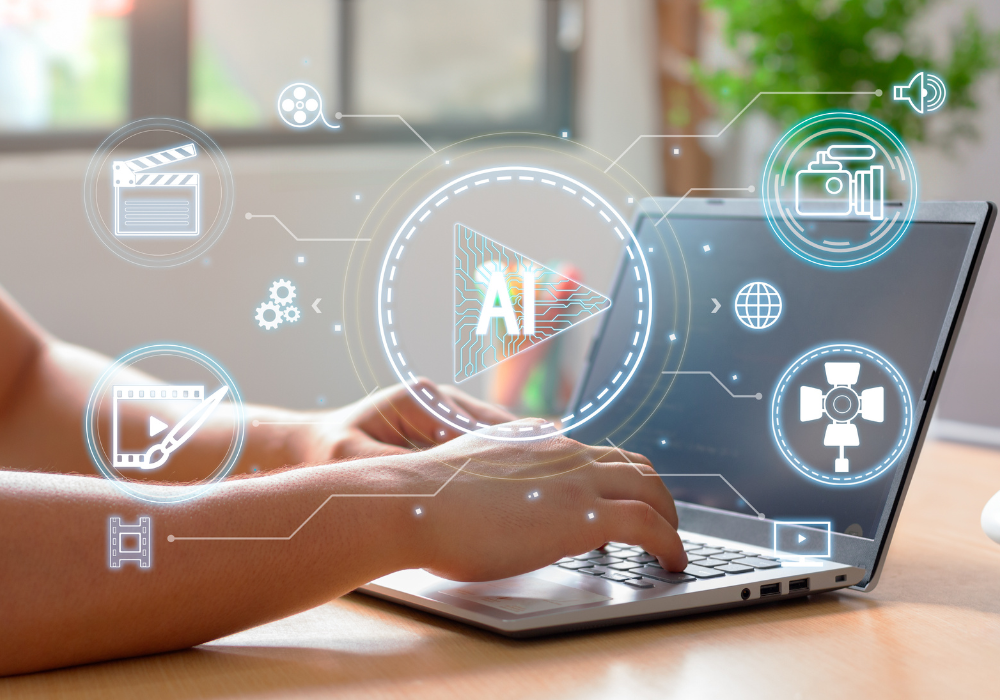Best AI Software Tools Revolutionizing the Way We Work

Artificial Intelligence (AI) has become an integral part of our lives, from virtual assistants on our phones to self-driving cars. But beyond these everyday applications, AI is also transforming the way we work. With the help of AI software tools, businesses can automate processes, analyze data, and make informed decisions. In this article, we will explore the top AI software tools that are revolutionizing the way we work.
1. Natural Language Processing (NLP)

Understanding Human Language with NLP
Natural Language Processing (NLP) is a branch of AI that focuses on understanding human language. It enables computers to read, understand, and interpret text in a way that is similar to how humans do. NLP is used in various applications such as chatbots, sentiment analysis, and language translation.
One of the most popular NLP tools is Google’s BERT (Bidirectional Encoder Representations from Transformers). BERT uses deep learning techniques to understand the context of words in a sentence, making it more accurate in understanding human language. This tool has been widely adopted by businesses for tasks such as text classification and question-answering systems.
Advantages of Using NLP in Business
- Automates customer service: With the help of NLP-powered chatbots, businesses can provide 24/7 customer support without the need for human intervention.
- Improves efficiency: NLP tools can analyze large volumes of text data in a fraction of the time it would take a human, freeing up employees to focus on more complex tasks.
- Personalizes marketing efforts: NLP can analyze customer feedback and social media posts to understand their preferences and tailor marketing campaigns accordingly.
| Pros | Cons |
|---|---|
| – Saves time and resources | – Requires large amounts of training data |
| – Improves accuracy | – Can be biased based on the training data |
| – Enables automation | – Limited understanding of context |
2. Machine Learning (ML)

Predictive Analytics with Machine Learning
Machine Learning (ML) is a subset of AI that focuses on training algorithms to make predictions or decisions based on data. It involves feeding large amounts of data into an algorithm and allowing it to learn from the patterns in the data. ML is used in various applications such as fraud detection, recommendation systems, and predictive maintenance.
One of the most popular ML tools is TensorFlow, developed by Google. It is an open-source library that enables developers to build and train ML models for various tasks. TensorFlow has been widely adopted by businesses for its flexibility and scalability, making it suitable for both small and large datasets.
Advantages of Using ML in Business
- Improves decision-making: ML algorithms can analyze vast amounts of data and make accurate predictions, enabling businesses to make informed decisions.
- Reduces human error: By automating processes, ML reduces the risk of human error, leading to more accurate results.
- Personalizes customer experience: ML-powered recommendation systems can analyze customer behavior and preferences to provide personalized recommendations, improving customer satisfaction.
| Pros | Cons |
|---|---|
| – Can handle large datasets | – Requires technical expertise to develop and maintain |
| – Improves accuracy over time | – Can be biased based on the training data |
| – Enables automation | – Requires high-quality data for accurate results |
3. Robotic Process Automation (RPA)

Automating Repetitive Tasks with RPA
Robotic Process Automation (RPA) is a technology that uses software robots to automate repetitive tasks. These robots can mimic human actions, such as clicking buttons and entering data, to perform tasks on a computer. RPA is used in various industries, including finance, healthcare, and manufacturing.
One of the most popular RPA tools is UiPath, which offers a user-friendly interface for building and managing software robots. It can automate tasks across multiple applications and systems, making it suitable for complex business processes.
Advantages of Using RPA in Business

- Increases efficiency: RPA can perform tasks faster and more accurately than humans, leading to increased productivity.
- Saves time and resources: By automating repetitive tasks, employees can focus on more critical tasks, leading to time and cost savings.
- Scalable and flexible: RPA can be easily scaled up or down based on business needs, making it suitable for businesses of all sizes.
| Pros | Cons |
|---|---|
| – Improves accuracy | – Limited to rule-based tasks |
| – Reduces human error | – Requires maintenance and updates |
| – Enables automation | – Can be expensive to implement |
4. Computer Vision

Understanding Visual Data with Computer Vision
Computer Vision is a branch of AI that focuses on enabling computers to understand visual data, such as images and videos. It involves using algorithms to analyze and interpret visual data, similar to how humans do. Computer Vision is used in various applications, including self-driving cars, facial recognition, and quality control in manufacturing.
One of the most popular Computer Vision tools is OpenCV (Open Source Computer Vision Library). It is an open-source library that provides a wide range of functions for image and video processing, making it suitable for various applications.
Advantages of Using Computer Vision in Business
- Automates visual inspection: Computer Vision can analyze images and videos to identify defects or anomalies, reducing the need for manual inspection.
- Improves accuracy: By eliminating human error, Computer Vision can provide more accurate results, leading to improved decision-making.
- Enables new applications: With advancements in Computer Vision technology, businesses can explore new applications, such as augmented reality and autonomous vehicles.
| Pros | Cons |
|---|---|
| – Can analyze large amounts of visual data | – Requires high-quality data for accurate results |
| – Improves accuracy | – Limited understanding of context |
| – Enables automation | – Can be biased based on the training data |
5. Predictive Analytics

Making Informed Decisions with Predictive Analytics
Predictive Analytics is a branch of AI that uses statistical techniques and ML algorithms to analyze historical data and make predictions about future events. It enables businesses to identify patterns and trends in data, leading to more informed decision-making. Predictive Analytics is used in various industries, including finance, healthcare, and marketing.
One of the most popular Predictive Analytics tools is SAS (Statistical Analysis System). It offers a wide range of statistical and ML algorithms for analyzing data and making predictions. It also provides a user-friendly interface for data visualization and reporting.
Advantages of Using Predictive Analytics in Business
- Identifies opportunities and risks: By analyzing historical data, Predictive Analytics can identify potential opportunities and risks, enabling businesses to make proactive decisions.
- Improves efficiency: With automated data analysis, Predictive Analytics saves time and resources compared to traditional methods.
- Personalizes customer experience: By analyzing customer data, Predictive Analytics can provide personalized recommendations and offers, improving customer satisfaction.
| Pros | Cons |
|---|---|
| – Improves decision-making | – Requires high-quality data for accurate results |
| – Saves time and resources | – Can be biased based on the training data |
| – Enables automation | – Requires technical expertise to develop and maintain |
FAQs

What is the difference between AI and ML?
AI is a broad field that focuses on creating intelligent machines that can perform tasks that typically require human intelligence. ML is a subset of AI that involves training algorithms to make predictions or decisions based on data.
How does AI benefit businesses?
AI can automate processes, improve efficiency, and provide valuable insights for decision-making, leading to cost savings and increased productivity.
Is AI replacing human jobs?
While AI may automate certain tasks, it also creates new job opportunities in fields such as data science and AI development. It is more likely to augment human capabilities rather than replace them entirely.
How can businesses ensure ethical use of AI?
Businesses should ensure that their AI systems are transparent, explainable, and free from bias. They should also have policies in place to address any potential ethical concerns.
What are the limitations of AI software tools?
AI software tools require high-quality data for accurate results, and they may be biased based on the training data. They also require technical expertise to develop and maintain, which can be costly for small businesses.
Video
Conclusion
AI software tools are revolutionizing the way we work by automating processes, analyzing data, and providing valuable insights for decision-making. From NLP and ML to RPA and Computer Vision, these tools offer a wide range of applications for businesses of all sizes. As AI technology continues to advance, we can expect to see even more innovative tools that will further transform the way we work.











